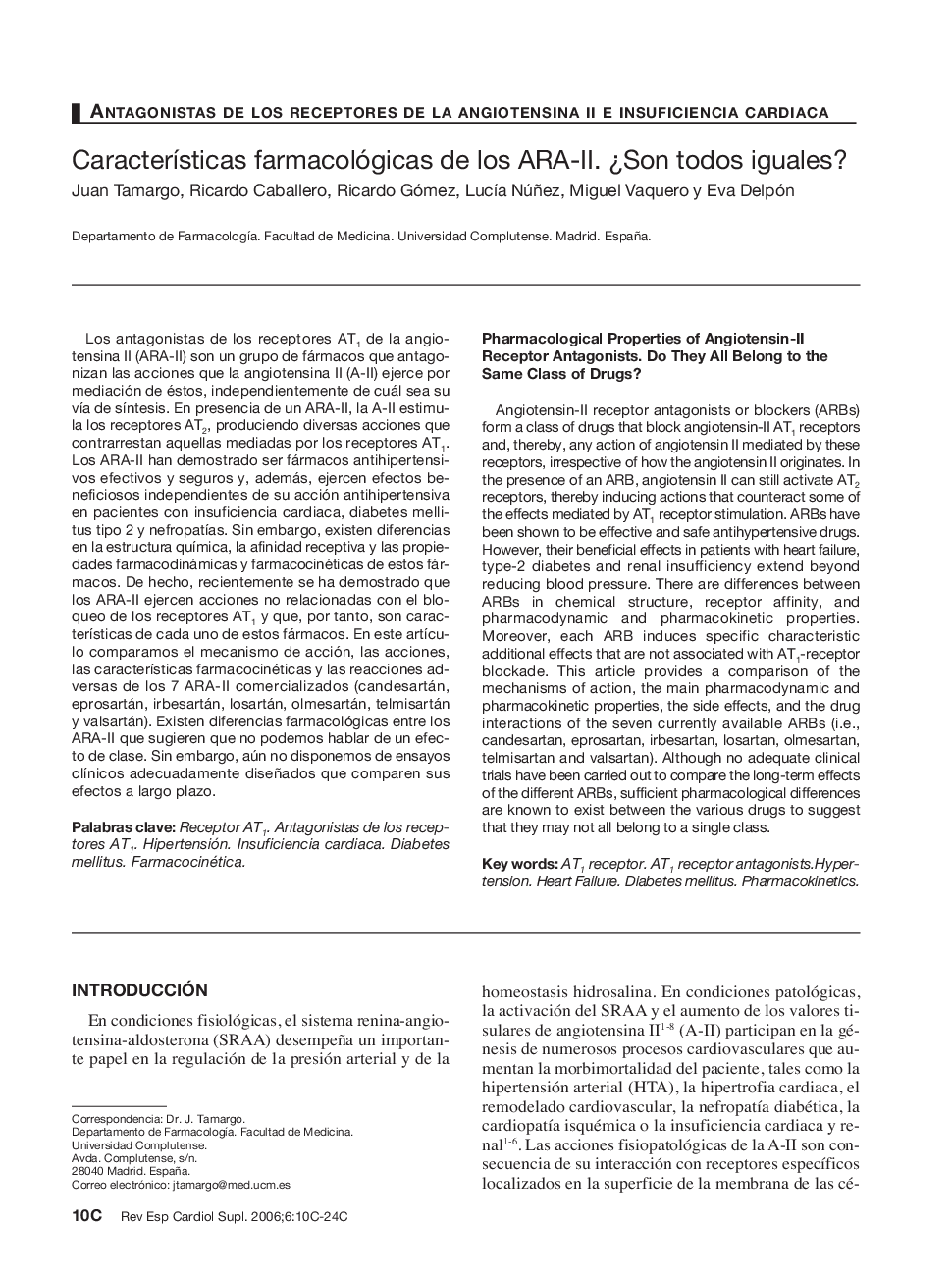| Article ID | Journal | Published Year | Pages | File Type |
|---|---|---|---|---|
| 3019715 | Revista Española de Cardiología Suplementos | 2006 | 15 Pages |
Abstract
Angiotensin-II receptor antagonists or blockers (ARBs) form a class of drugs that block angiotensin-II AT1 receptors and, thereby, any action of angiotensin II mediated by these receptors, irrespective of how the angiotensin II originates. In the presence of an ARB, angiotensin II can still activate AT2 receptors, thereby inducing actions that counteract some of the effects mediated by AT1 receptor stimulation. ARBs have been shown to be effective and safe antihypertensive drugs. However, their beneficial effects in patients with heart failure, type-2 diabetes and renal insufficiency extend beyond reducing blood pressure. There are differences between ARBs in chemical structure, receptor affinity, and pharmacodynamic and pharmacokinetic properties. Moreover, each ARB induces specific characteristic additional effects that are not associated with AT1-receptor blockade. This article provides a comparison of the mechanisms of action, the main pharmacodynamic and pharmacokinetic properties, the side effects, and the drug interactions of the seven currently available ARBs (i.e., candesartan, eprosartan, irbesartan, losartan, olmesartan, telmisartan and valsartan). Although no adequate clinical trials have been carried out to compare the long-term effects of the different ARBs, sufficient pharmacological differences are known to exist between the various drugs to suggest that they may not all belong to a single class.
Related Topics
Health Sciences
Medicine and Dentistry
Cardiology and Cardiovascular Medicine
Authors
Juan Tamargo, Ricardo Caballero, Ricardo Gómez, LucÃa Núñez, Miguel Vaquero, Eva Delpón,
